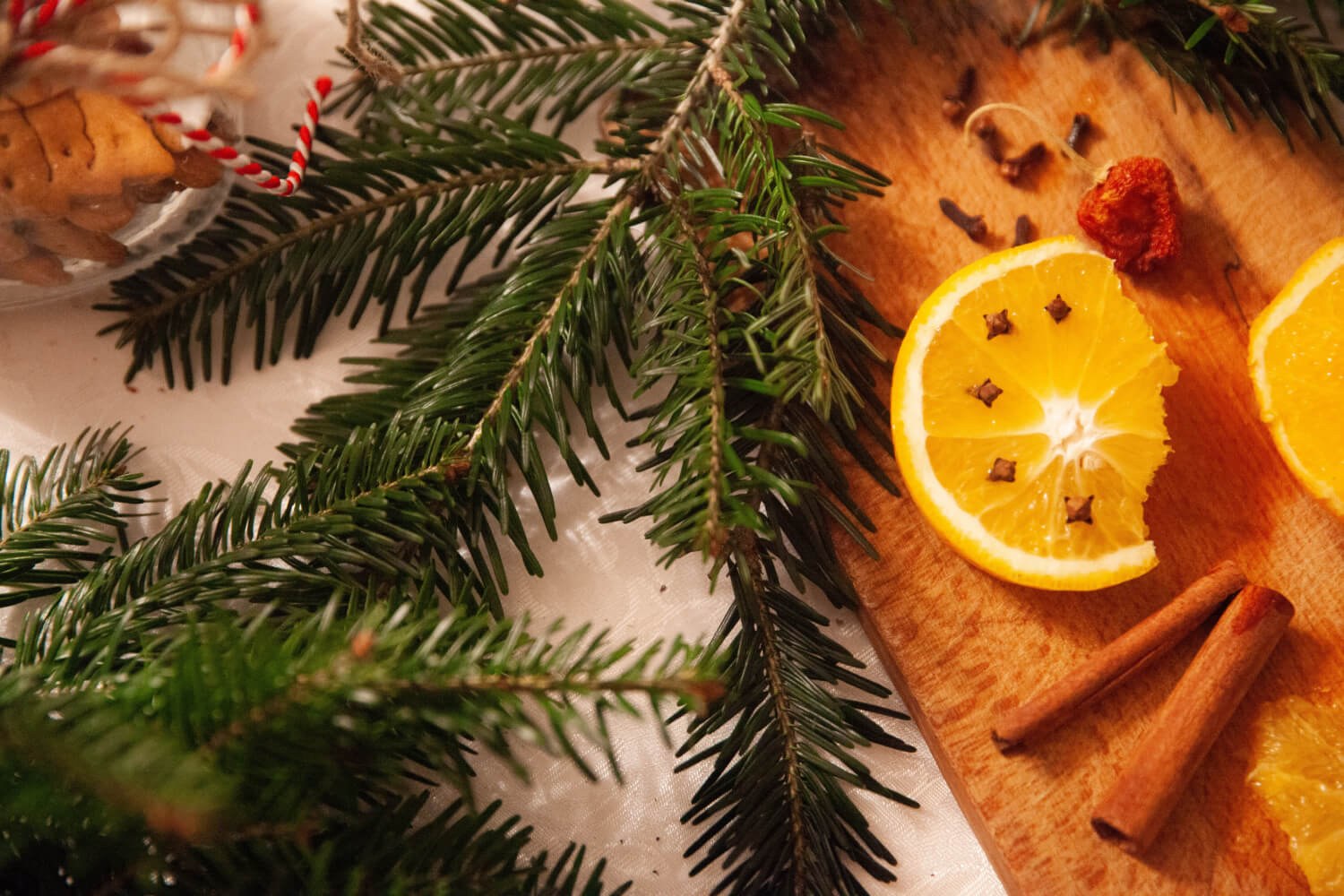
The festive season in the UK is as much a feast for the taste buds as it is for the eyes and ears. Come Christmastime, British households light up not just with twinkling lights but also with the delicious aromas of traditional Christmas foods and drinks!
Let’s take a gastronomic journey to explore some of the quintessential British Christmas treats and where they came from.
Classic British Christmas Food – Mince Pies
Mince pies, despite their name, have evolved significantly over the years and no longer contain minced meat. In the past, these pies did indeed feature a mixture of meat and sweet spices in their fillings. However, as time went on, the inclusion of meat gradually faded away, ultimately resulting in the delicious sweet filling we know today.
In the contemporary culinary landscape, mince pies are typically filled with a mixture known as mincemeat. This mincemeat is a delightful blend of dried fruits, aromatic spices, and occasionally a dash of spirits like brandy for added flavour. Encased within a layer of buttery pastry, these bite-sized treats have become a beloved dessert, offering a delightful combination of sweetness and warmth to savour.
Mulled Wine
The tradition of enjoying spiced and heated wine can be traced back to ancient Roman times, and it was introduced to Britain when the Romans invaded the region. However, the practice of mulling wine gained significant popularity during the Victorian era in England.
Now, the preparation of this delightful drink involves gently simmering red wine with a blend of aromatic spices like cloves, nutmeg, and cinnamon. Additionally, oranges, lemons, and sugar are frequently incorporated to enhance the flavour profile. The end result is a comforting and fragrant beverage that is particularly well-suited for warming up on cold winter evenings.
British Christmas Food – Christmas Pudding
This classic British Christmas food’s origins trace back to the Middle Ages as a porridge-like dish called ‘frumenty’, containing beef, mutton, raisins, currants, wines, and spices. By Victorian times, it had evolved into the sweet, dense dessert we recognise today.
This rich pudding is made with suet, flour, breadcrumbs, and a medley of dried fruits. Traditionally, it’s steamed for hours, then aged for weeks (sometimes even a year!) and is flambeed before serving. It’s a spectacular end to the Christmas meal.
Roast Turkey
Though Brits have been enjoying Christmas feasts for centuries, turkey became the popular choice for the main course only in the last few centuries. Before that, goose, boar, or even peacock graced the tables.
Today, the turkey is oven-roasted to golden perfection, often stuffed with a savoury filling, and served with gravy, cranberry sauce, and all the trimmings.
Brandy Butter
Made by creaming butter, sugar, and brandy together, this indulgent spread melts over hot desserts, elevating their richness. This creamy accompaniment to Christmas pudding and mince pies came into vogue in the 20th century.
Trifle
Trifle has undergone a remarkable transformation, evolving into a lavish and indulgent dessert. Contemporary trifle recipes are a sumptuous affair featuring a complex layering of flavours and textures. The traditional custard remains a crucial element, but it now shares the spotlight with layers of sponge cake that have been generously soaked in sherry or wine, infusing the dessert with a delightful hint of spirits.
These moist and boozy cake layers are then crowned with a layer of wobbly, jewel-toned jelly, adding both visual appeal and an additional burst of flavour. On top of the jelly, a velvety blanket of custard drapes gracefully, providing a creamy and comforting contrast to the other components.
But the indulgence doesn’t stop there; modern trifles are often finished with a generous dollop of freshly whipped cream that adds a luscious richness to each spoonful. To add a touch of freshness and a vibrant burst of colour, it’s common to garnish this dessert with an array of fresh fruits or a sprinkling of finely chopped nuts.
Boxing Day’s Bubble and Squeak
Although not exclusive to Christmas Day, bubble and squeak’s roots lie in repurposing Christmas dinner leftovers. In times when food waste was discouraged, creative home cooks devised this dish to make the most of precious scraps.
Today, Boxing Day’s Bubble and Squeak retains its charm with a contemporary twist. Leftover vegetables, like cabbage, Brussels sprouts, and roast potatoes, are mashed together. This colourful mixture is pan-fried to a delightful crispiness while preserving its inner tenderness, creating a dish that captures the essence of the previous day’s feast. Often enjoyed as a post-Christmas breakfast or lunch, it’s a flavourful way to extend the holiday spirit while preventing food waste.
Yule Log (or Bûche de Noël)
The Yule Log, deeply rooted in symbolism, pays homage to an ancient tradition observed during the winter solstice. In times of yore, people would gather to burn a massive log, often an entire tree trunk, in a ritualistic celebration of the return of longer days and the triumph of light over darkness. This age-old custom symbolized hope and renewal during the coldest and darkest time of the year. Over time, as traditions evolved, the Yule Log transitioned from a symbolic fire to a delightful culinary tradition.
There’s no denying the central role that food and drink play in British Christmas traditions. Whether it’s the shared ritual of stirring the Christmas pudding or the collective groan after one too many mince pies, these dishes weave themselves into the fabric of festive memories. So, as you prepare for your festive feasts, take a moment to savour not just the flavours but also the rich history behind these classic British Christmas food delights.
